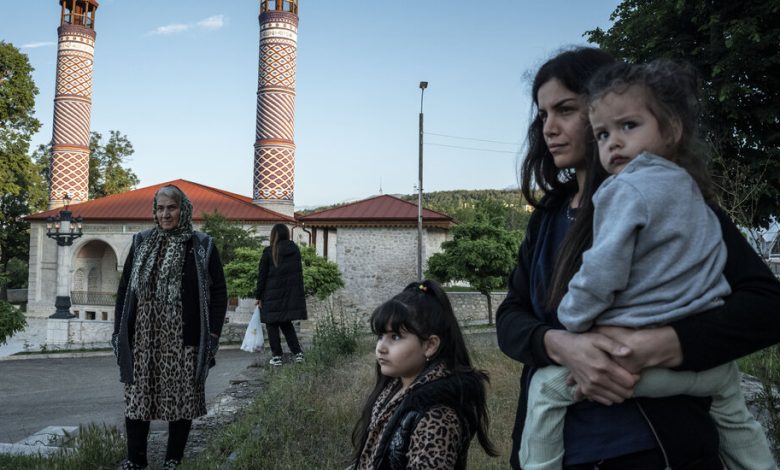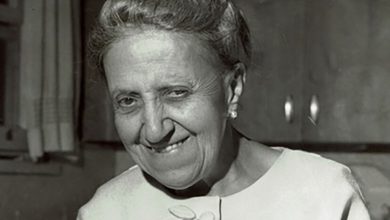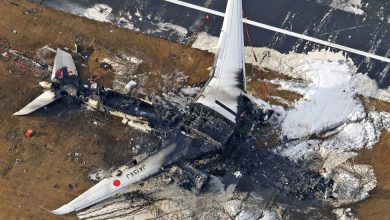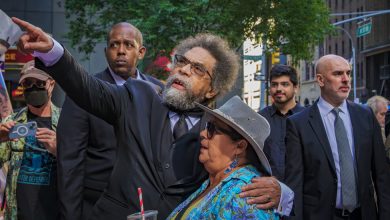What’s Left When a Long War Suddenly Ends

The commander of the victorious army watched on in triumph as his troops goose-stepped in columns through the central square of the former breakaway capital they had captured in a brazen attack just weeks before.
The commander, President Ilham Aliyev of Azerbaijan, was taking a victory lap last week around the Nagorno-Karabakh city of Stepanakert, also known as Khankendi, a ghost town after its ethnic Armenian residents fled in fear as Azerbaijani troops captured the area.
“The enemy has knelt before us,” Mr. Aliyev, dressed in camouflage, said as he hailed his troops from a small podium.
Azerbaijan seized full control over Nagorno-Karabakh, including Stepanakert, in late September after defeating separatist forces, extending gains made in 2020 when a Russia-brokered cease-fire allowed it to take over most of the territory that Armenia had seized in a yearslong war in the 1990s.
The territory has been transformed. More than 100,000 of its residents have fled since September, and Azerbaijanis have streamed in since last year to assume control over the homes and communities from which their families were expelled decades ago.

A new apartment complex under construction in Shusha. Rebuilding efforts are underway in parts of the region.
While the guns have fallen silent, the triumphalism of the Azerbaijanis and provocative statements by Mr. Aliyev, who makes little secret of his irredentist claims against Armenia, will do little to calm long-running ethnic tensions, experts say.
“He was a victor, and he could have used this position to mend the situation, to stop the rhetoric of hatred and start building real peace,” Altay Goyushov, an Azerbaijani historian, said of Mr. Aliyev’s parade and his public pronouncements about ethnic Armenians, whom he has accused of “savagery,” ethnic cleansing and genocide. (Armenia has long made similar accusations against Azerbaijan.)
Mr. Goyushov added: “Unfortunately, we haven’t seen that.”
The conflict over Nagorno-Karabakh, a strategic sliver of mountainous land in the Caucasus, had tormented diplomats and politicians from Russia and the West for decades. Tens of thousands of soldiers and civilians have been killed in the years of fighting.
Visits to both sides of the border — in Azerbaijan in June, and Armenia in July and late September — by a team from The New York Times and conversations with residents, followed up with telephone calls in October, suggest that the wounds of the conflict are likely to fester, creating fertile ground for new violence.
Azerbaijani families are building new homes, planting trees and arranging furniture to celebrate their return to their ancestral villages after more than 30 years in exile. On the other side of the border, the scene is strikingly different: Over 100,000 ethnic Armenians who fled the territory in a caravan of cars are struggling to start anew in Armenia.
“My land feels so sweet,” said Gayane Milonyan, 36, an Armenian who fled Stepanakert, the town where Mr. Aliyev held the parade, already nostalgic for the home she left in September with 29 members of her extended family, including her two children. But, she said, “the same land is so thirsty for blood.”
She and her family are now living in a hotel in Goris, across the mountains in Armenia.
Ramiz Gasanov, an Azerbaijani who is now building a home for his family in Lachin, the Karabakh town they fled more than three decades ago, said last month that he did not want the Armenians to leave but that he had “lived through the same tragedy 30 years ago.”
That sense of resentment simmers on both sides.
“I am happy that we returned, but we lost everything that we had here,” Gulbeniz Magerramova, 67, said in June as she threaded through the overgrown ruins of her ancestral home in Shusha, a major Karabakh town that both Armenians and Azerbaijanis regard as central to their national identities.
She compared what happened to her and her extended family with the plight of Ukrainians, millions of whom have been displaced across Europe after Russia’s full-scale invasion in February 2022. Her advice: never lose hope.
But many on both sides of the conflict say it is difficult not to feel disheartened — and deep bitterness — when years turn into decades.
Standing in front of the house his father had built in Lachin and to which he has just returned, Iman Ismailov said he felt “nothing but hatred” toward Armenians for forcing him to flee his home three decades ago.
“Thirty-one years of my life have been destroyed,” said Mr. Ismailov, 64. “When we left this house, we had nine people in our family,” he said, as workers fixed his front door. “Now, only my sister and I came back.”
Armenians who have fled Lachin expressed similar feelings.
Aida Balikyan moved more than a year ago, leaving behind a store, a carwash and a tire shop in the Karabakh town and traveling across the border to the village of Kornidzor in Armenia. From her balcony, she can see Lachin.
In the new store she rents, a teary-eyed Ms. Balikyan, 73, showed a picture of Mr. Aliyev, the Azerbaijani president, standing in Lachin in front of what she said was a tree her husband had planted.
“I am waiting,” Ms. Balikyan said in June, when a team from The Times visited her. “I don’t know when and how, but we will be back.”
For now, Mr. Aliyev’s authoritarian government is trying to turn Lachin into a prosperous symbol of his rule. New homes and apartment buildings have mushroomed around old ruined ones. About 650 Azerbaijanis are expected to settle there by the end of the year, said Nasimi Asadov, who manages the Lachin project.
The Azerbaijani government has a master plan for the town, developed by a Swiss company, that envisions the construction of an “occupation” museum focusing on the years that Armenians controlled Nagorno-Karabakh, a theater and a cinema. Overall, it plans to spend more than $17.5 billion on developing the Karabakh region by 2026, according to Aydin Kerimov, one of the Azerbaijani officials overseeing the project.
But none of that will erase the memories of painful exile for Shafaq Abbasova. Walking through Lachin, Ms. Abbasova was looking for the house she grew up in, only managing to do so by spotting familiar ceramic tiles on its ruined walls.
Apart from building infrastructure, Azerbaijan is also demining the frontier that separated the two armies. Over the past three decades, it turned into one of the most fortified areas in the world, leaving a permanent scar on the land, said Ruslan Muradov, one of the specialists leading the effort.
Mr. Muradov said the demining process was a reminder that conflicts last much longer than their active phases. He said it would take up to 40 years and billions of dollars for the Azerbaijani authorities to complete the process.
In Nagorno-Karabakh — whose modest size belies its strategic importance for Russia, Turkey, Iran and the West — Armenians and Azerbaijanis once lived together largely peacefully, even if with their own, diametrically opposed visions of the region’s history.
Armenians and Azerbaijanis described how they used to coexist peacefully during the Soviet era, bound by intermarriage and commerce, with grievances kept in check under the watchful eye of the central government in Moscow.
In Shusha, for instance, Ms. Magerramova said that her children played and ate together with Armenian neighbors.
But, sitting on top of a picturesque cliff that overlooks the surrounding area, Shusha has also been a symbol of decades-old interethnic strife over territory and history. During the past century, it was burned three times: once by both sides, once by the Azerbaijanis, and once by the Armenians. Now, Armenians have left again, and many already harbor hopes for an eventual return.
Ruben Arutyunyan, 63, fought to conquer Shusha (which he and other Armenians call Shushi) from Azerbaijan in 1992. Once it was captured, he walked through the town to find his ancestral home. His father’s photograph was still hanging on a wall.
In 2020, hours before Azerbaijanis captured it, he ran from Shusha for dozens of miles with only a bag of documents. He still holds a grudge.
“No matter how good an Azerbaijani is, he will always shoot you in the back,” he said in June.
But, he added, bigger forces had been at play in the conflict.
“This is not our war,” Mr. Arutyunyan said. “It is a war between the interests of Russia, America and Britain.”
Nyree Abrahamian contributed reporting from Goris, Armenia, and Naila Balayeva from Lachin, Azerbaijan.




